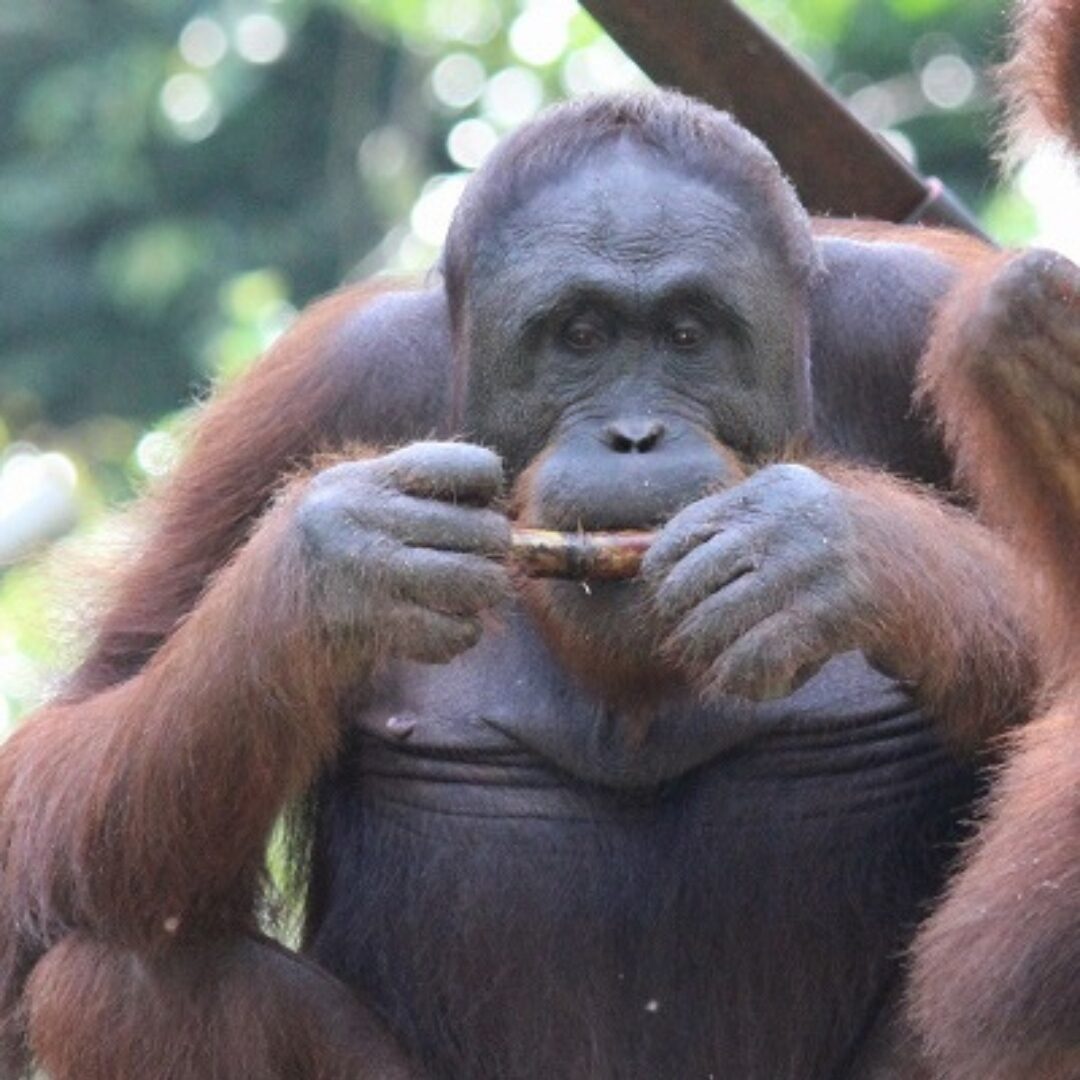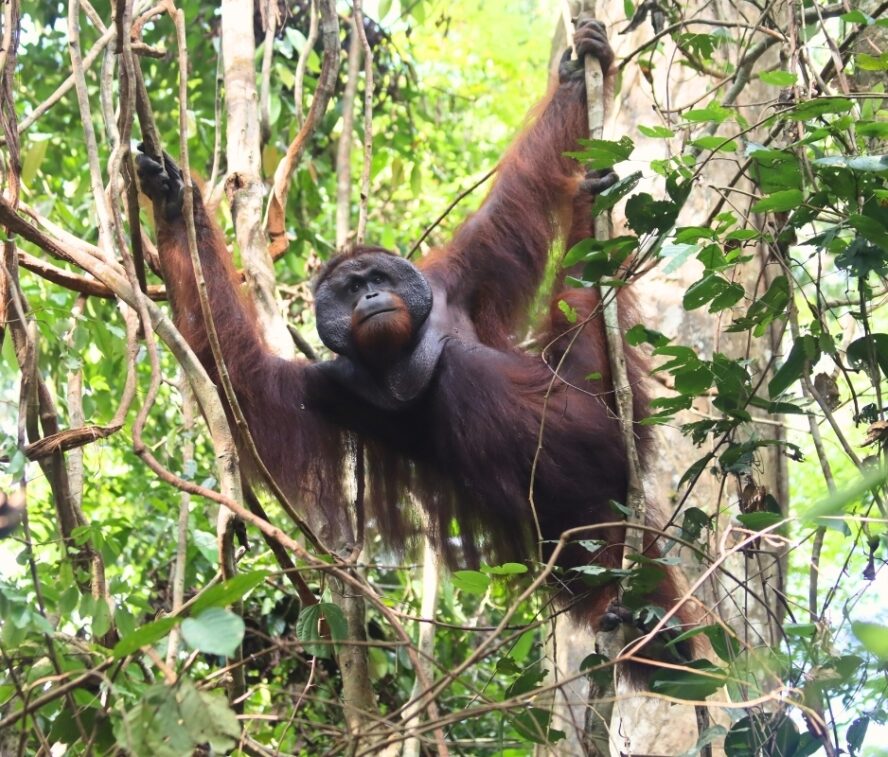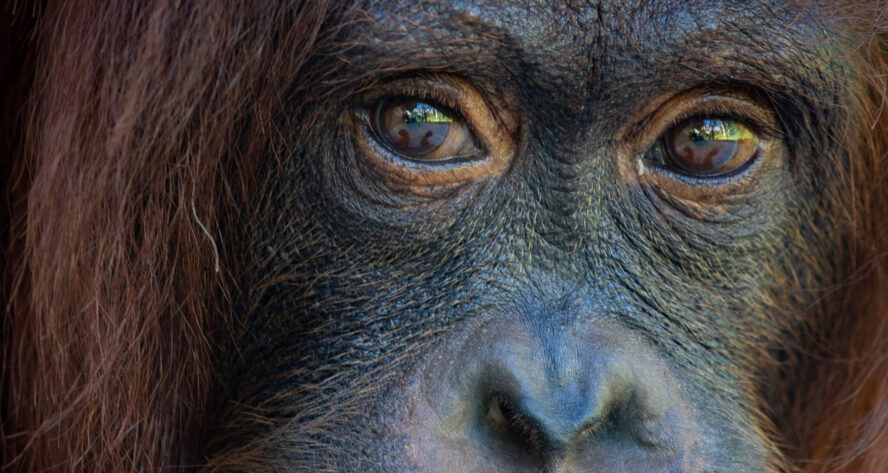

Resources
About male orangutans
Adult male orangutans can become dominant and develop flanges which are distinct facial features.
In an orangutan context, "dominance" refers to the social hierarchy or status of an individual within a population.
Dominant male orangutans produce higher amounts of testosterone compared to their submissive counterparts, which determines the likelihood of flanges appearing. Although unflanged males can still engage in mating and father offspring, their testosterone levels are lower than those of dominant males.
Flanges are distinct facial features that develop on the sides of male orangutan faces, extending from their cheekbones to their temples. They demonstrate maturity and can develop during puberty. Flanges serve multiple purposes, such as amplifying vocalizations, displaying dominance to other males, and attracting females during mating season. The size and shape of flanges can vary among different orangutan species and individuals.
The average time for flanges to develop is one - two years. Here is a photographic timeline of Malim, a wild, dominant male who visits Sepilok regularly.
Malim
January 2019
Male orangutans start to develop flanges in the absence of another dominant male. They are made of tissue and appear as a result of a hormone called testosterone.

Malim
December 2019
As the flanges develop and grow, creases on the forehead will become more prominent and facial hair gets longer.

Malim
2020
In addition to flanges, male orangutans also grow a large skin sack beneath their chin. This is called a laryngeal sac and helps them make deep, loud sounds called long calls which are used to attract a mate.

Malim
2022
Flanges become larger and more rounded as they grow resulting in a deep crease in the orangutans forehead called a sagittal crest.

Malim
2023
During flange development, male orangutans will also increase in body size and experience significant growth in hair which becomes longer and thicker across their bodies.

Explore more articles
![Malim]()
Resources
Orangutans and the rainforest
Every orangutan is a precious guardian of the rainforest. By protecting them, we ensure future generations inherit a thriving home.
![Orangutan eyes close up]()
Resources
Why orangutans need our help
Bornean orangutans are critically endangered, facing multiple threats in the wild.
![Home page wheelbarrow]()
Resources
Five ways you can help orangutans
By making small changes you can have a big impact on orangutan conservation!


